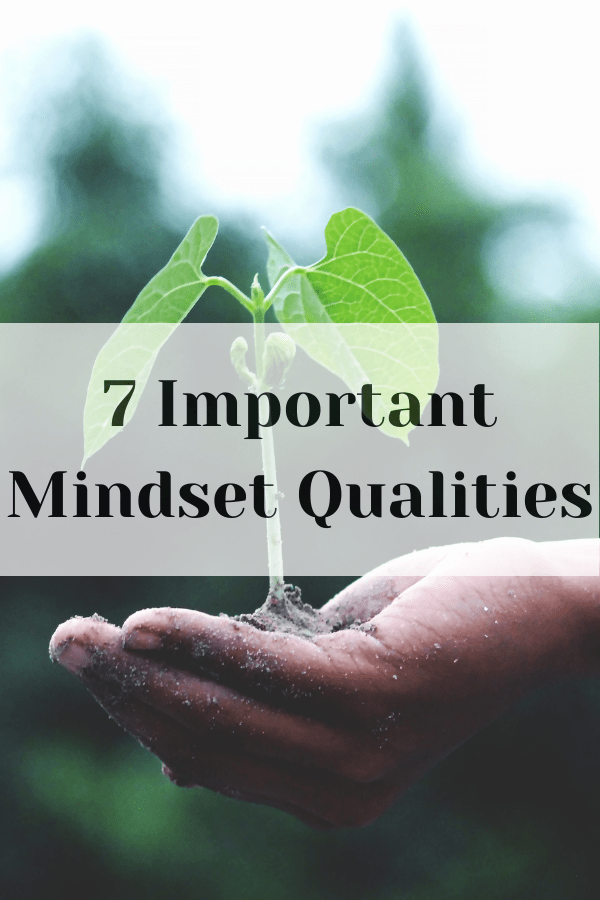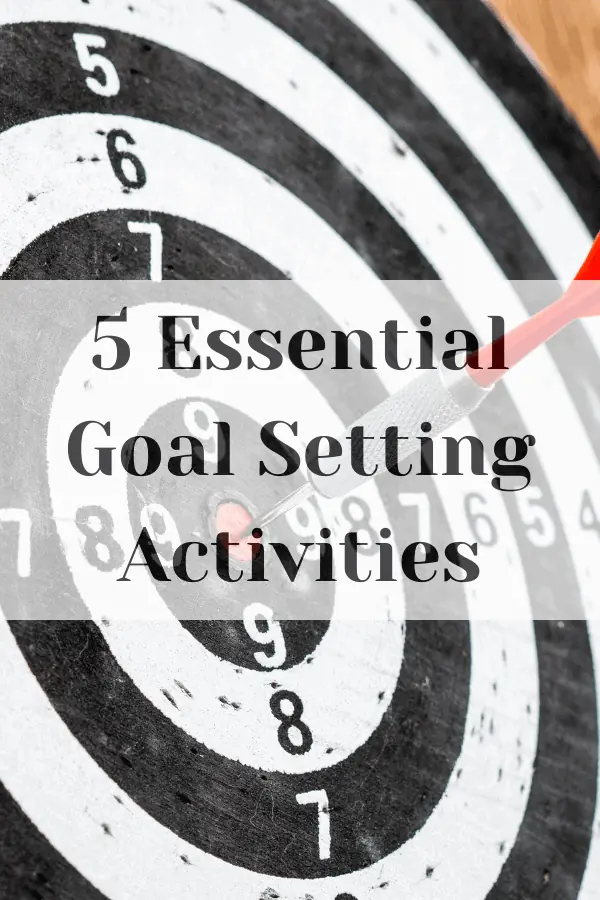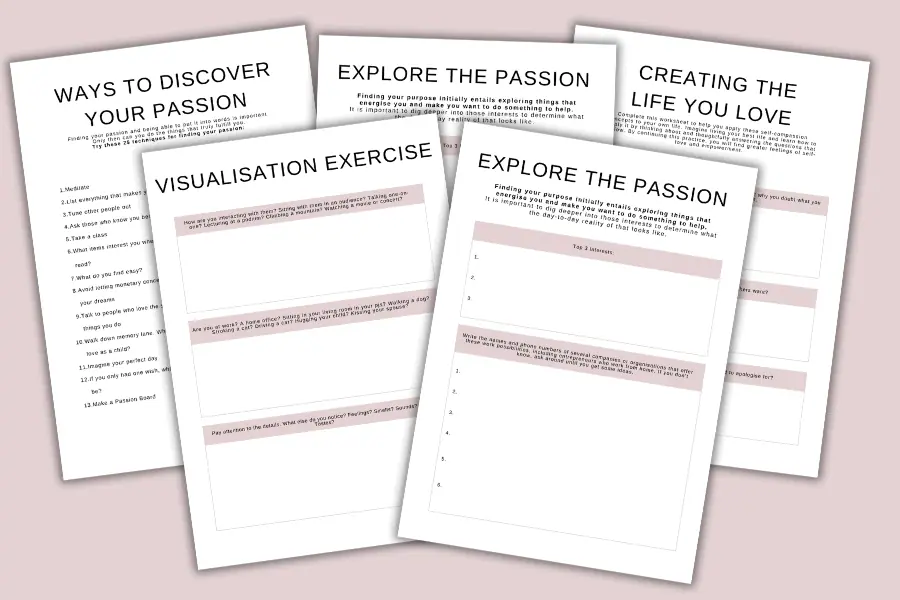Mindset Examples: Uncover Your Pattern of Thinking
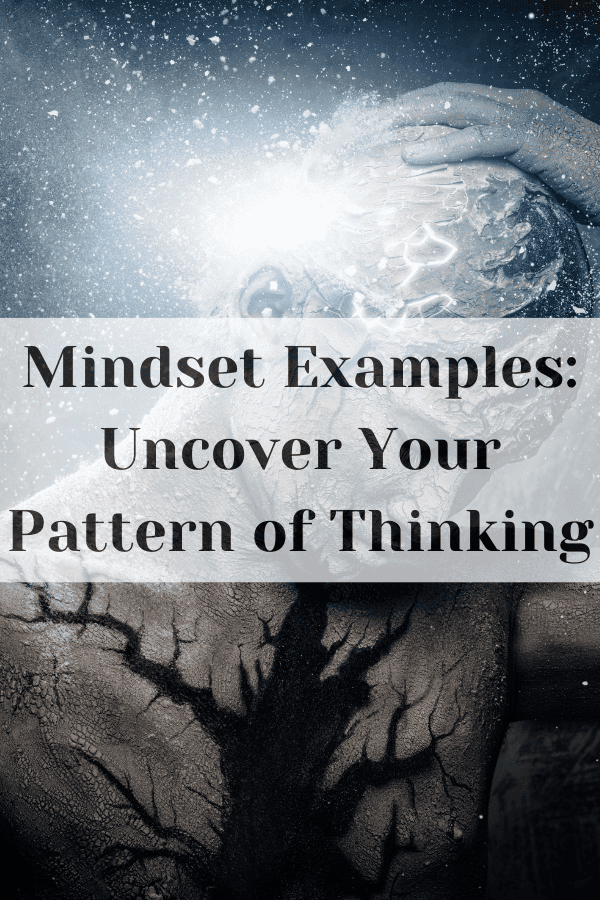
Have you ever wondered why some people seem to effortlessly overcome challenges and achieve their goals, while others remain stuck in a cycle of self-doubt and limitations? At the core of our thoughts, beliefs, and actions lies our mindset, a powerful force that shapes our perception of ourselves and the world around us.
Our mindset influences how we approach challenges, embrace opportunities, and navigate through life’s ups and downs. It can either propel us forward or hold us back from reaching our full potential. That’s why understanding our mindset and its impact is crucial for personal growth.
In this blog post, we will explore a range of mindset examples to help you gain a deeper understanding of different mindsets. By identifying which mindset resonates with you the most, you’ll be equipped with valuable self-awareness and insight to support your personal growth journey.
The objective of this blog post is to provide you with various mindset examples that can serve as mirrors for your own thoughts, beliefs, and behaviours. Through these examples, you’ll uncover patterns of thinking and belief systems that may be shaping your own mindset, paving the way for positive change and transformation.
So, let’s delve into the intriguing world of mindsets and discover the different types that exist. By the end of this post, you’ll have a clearer picture of your own mindset and be inspired to cultivate a mindset that aligns with your goals and aspirations.
This blog post is about mindset examples
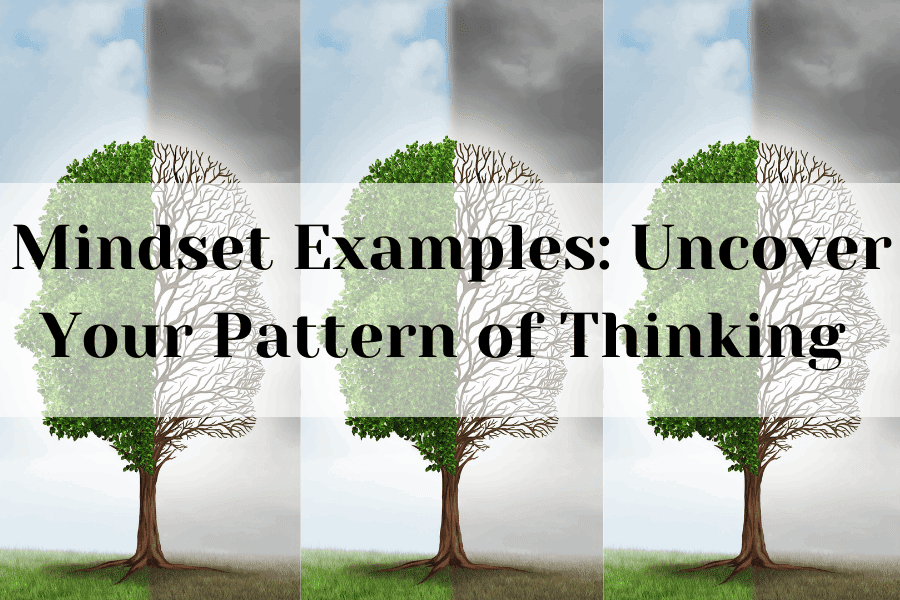
Understanding Mindset
Our mindset is the lens through which we perceive and interpret the world. It encompasses our beliefs, attitudes, and assumptions about ourselves, others, and the possibilities that lie ahead. It influences not only our thoughts and behaviours but also the outcomes we experience in various aspects of life, including relationships, careers, and personal fulfilment. A positive mindset can empower us to overcome obstacles, embrace challenges as opportunities for growth, and foster resilience in the face of setbacks.
Fixed mindset vs Growth mindset
Two primary mindsets often discussed are the fixed mindset and the growth mindset. A fixed mindset is characterised by the belief that our qualities and abilities are fixed traits, not subject to change. Individuals with a fixed mindset tend to avoid challenges, shy away from effort, and feel threatened by the success of others. On the other hand, a growth mindset is the belief that our abilities can be developed and improved through dedication, effort, and learning from failures. Those with a growth mindset embrace challenges, persist in the face of setbacks, and find inspiration in the success of others.
Mindset change and development
The exciting aspect of mindset is that it is not fixed or predetermined. While we may have a predominant mindset based on our upbringing, experiences, and conditioning, we have the power to change and develop our mindset. This is where the true potential for personal growth lies. By cultivating a growth mindset and adopting new perspectives, we can expand our abilities, increase resilience, and unlock new possibilities. Mindset change is not an overnight process, but with awareness, intention, and consistent effort, we can gradually transform our mindset and experience transformative shifts in our lives.
Understanding the impact of mindset on our thoughts, behaviours, and outcomes is key to initiating personal growth. By recognising the difference between a fixed mindset and a growth mindset, we can evaluate our own mindset and begin to explore opportunities for change. So, let’s explore various mindset examples to gain deeper insights into the different types of mindsets and discover the mindset that resonates with you.
Mindset Examples
Growth mindset
A growth mindset is characterised by a belief in the potential for personal growth and development. Individuals with a growth mindset see challenges as opportunities to learn and grow. They embrace effort and perseverance, view failure as a stepping stone to success, and are inspired by the success of others. For example, someone with a growth mindset may view a setback at work as a chance to learn from their mistakes and improve their skills. They actively seek feedback and take on new challenges with enthusiasm and a desire to continuously improve.
Fixed mindset
In contrast, a fixed mindset is characterised by the belief that our abilities and qualities are fixed traits that cannot be significantly changed. Individuals with a fixed mindset tend to avoid challenges that might expose their perceived limitations. They may shy away from effort, fearing that it won’t make a difference, and view failure as proof of their inherent shortcomings. For instance, someone with a fixed mindset may give up on learning a new skill after encountering initial difficulties, convinced that they lack the inherent talent required for success.
Abundance mindset
The abundance mindset is a perspective that focuses on the belief that there is enough for everyone. It involves recognising and appreciating the abundance of opportunities, resources, and possibilities available in the world. Those with an abundance mindset approach life with optimism and gratitude, believing that there is plenty to go around. They are generous and supportive, and celebrate the successes of others. An example of an abundance mindset is when someone willingly shares their knowledge and connections, knowing that collaboration and collective growth benefit everyone involved.
Scarcity mindset
On the other hand, the scarcity mindset is characterised by a belief that resources and opportunities are limited, leading to a sense of competition and fear of missing out. Individuals with a scarcity mindset may feel a constant need to hoard or protect what they have, often at the expense of collaboration and cooperation. For instance, someone with a scarcity mindset might refuse to share information or ideas with colleagues for fear of losing their competitive edge.
Open mindset
Having an open mindset involves being receptive to new ideas, perspectives, and experiences. Those with an open mindset are curious, adaptable, and willing to challenge their existing beliefs. They actively seek out diverse opinions, engage in constructive dialogue, and embrace change. An example of an open mindset is when someone approaches a disagreement with curiosity, genuinely listening to different viewpoints and being open to revising their own opinions based on new information.
Closed mindset
A closed mindset is characterised by being resistant to change, new ideas, or alternative perspectives. Individuals with a closed mindset may be rigid in their thinking, unwilling to consider viewpoints that challenge their own, and resistant to adapting to new circumstances. For example, someone with a closed mindset may dismiss innovative approaches or suggestions simply because they deviate from the familiar.
Understanding these different mindset examples provides valuable insights into our own patterns of thinking and belief systems. In the next section, we will explore how to identify your own mindset and embark on the journey of mindset development.
Identifying Your Mindset
It’s essential to gain clarity about your own mindset. This involves reflecting on your thoughts, beliefs, and behaviours, and uncovering the patterns that shape your mindset. This process will empower you to gain insights into your predominant mindset and set the stage for personal growth.
Start by considering how you typically respond to challenges or setbacks. Do you embrace them as opportunities for growth, or do you tend to shy away from them, fearing failure or inadequacy?
Another important aspect to explore is your attitude towards feedback and constructive criticism. Are you open to receiving input from others, seeing it as a chance for improvement? Or do you tend to become defensive or resistant when someone points out areas where you can grow?
These guiding questions can help you determine your predominant mindset:
How do you view your abilities and intelligence? Do you believe they are fixed, unchangeable traits? Or do you see them as qualities that can be developed and expanded through effort and learning?
When others succeed, how do you react? Are you genuinely happy for their achievements, or do you find yourself feeling threatened or envious? Your response can indicate whether you possess a collaborative or competitive mindset.
Are you open to exploring new ideas and perspectives, even if they challenge your existing beliefs? Or do you tend to cling to your own viewpoints without considering alternatives? This reflects your willingness to embrace an open mindset.
How do you approach situations involving limited resources or opportunities? Do you feel a sense of abundance, believing that there is enough for everyone? Or do you often experience a scarcity mindset, fearing that there won’t be enough to go around?
By gaining clarity about your mindset, you lay the foundation for personal growth and transformation.
Cultivating a Positive Mindset
Shifting from a negative mindset to a positive one is a transformative journey that requires intentional effort and practice. Here are some practical tips and strategies to help you cultivate a positive mindset:
Practice self-awareness: Start by becoming aware of your thoughts and the narratives you tell yourself. Notice any negative or self-limiting beliefs that arise and consciously challenge them. Replace negative self-talk with positive and empowering affirmations.
Focus on gratitude: Cultivate a habit of gratitude by regularly acknowledging and appreciating the positive aspects of your life. Keep a gratitude journal, where you write down things you’re grateful for each day. This practice helps shift your focus towards positivity and fosters a mindset of abundance.
Surround yourself with positivity: Pay attention to the people, environments, and media you expose yourself to. Surround yourself with supportive and uplifting individuals, engage in activities that bring you joy, and consume content that inspires and motivates you.
Embrace failures as learning opportunities: Adopt a growth mindset and view failures as stepping stones on your path to success. Instead of dwelling on setbacks, extract lessons from them and use them to grow and improve. Celebrate your progress, no matter how small, and use it as fuel for further growth.
Practice mindfulness and self-care: Engage in mindfulness practices such as meditation or deep breathing exercises to bring awareness to the present moment. Take care of your physical and mental well-being through regular exercise, sufficient sleep, and nourishing yourself with healthy food.
Mindset development
In addition to the tips mentioned above, engaging in specific mindset development activities can further support your growth journey. Consider incorporating the following practices into your daily routine:
Read inspiring books: Immerse yourself in books that explore personal development, mindset, and resilience. These resources provide valuable insights, perspectives, and strategies for fostering a positive mindset. Some recommended titles include “Mindset” by Carol Dweck, “The Power of Now” by Eckhart Tolle, and “Man’s Search for Meaning” by Viktor Frankl.
Practice positive affirmations: Affirmations are powerful statements that help rewire your thought patterns. Repeat positive affirmations regularly, such as “I am capable of overcoming challenges,” “I embrace growth and change,” or “I am deserving of success.” This practice reinforces positive beliefs and strengthens your positive mindset.
Seek diverse perspectives: Engage in conversations with individuals who hold different opinions and come from diverse backgrounds. Listen actively, seek to understand their viewpoints, and challenge your own biases and assumptions. This practice broadens your perspective and encourages open-mindedness.
Engage in continuous learning: Attend workshops, seminars, or webinars on personal development and mindset. Enrol in online courses or join communities where you can engage with like-minded individuals and learn from their experiences. This commitment to lifelong learning fuels your mindset development journey.
Remember, cultivating a positive mindset is an ongoing practice. Be patient and kind to yourself throughout the process. Celebrate your progress, no matter how small, and stay committed to nurturing a positive mindset. With time and consistent effort, you’ll witness transformative changes in your thoughts, beliefs, and actions.
Mindset Examples Summary
Throughout this blog post, we explored the fascinating realm of mindset and its impact on personal growth. We began by understanding the concept of mindset and recognising the difference between a fixed mindset and a growth mindset. We then delved into various mindset examples, including the growth mindset, fixed mindset, abundance mindset, scarcity mindset, open mindset, and closed mindset. By identifying our own mindset tendencies, we gained valuable self-awareness and insights into our thoughts, beliefs, and behaviours.
Embrace a growth mindset
Now armed with this understanding, it’s time to take action. Embrace a growth-oriented mindset and commit to personal growth and development. Remember that mindset change is possible and within your control. Challenge self-limiting beliefs, cultivate positivity, and view failures as stepping stones to success. Engage in mindset development activities, such as reading inspiring books, practising affirmations, seeking diverse perspectives, and engaging in continuous learning. Your mindset is a powerful tool that can shape the trajectory of your life.
As we conclude this journey of exploring mindset examples, let us leave you with a final thought. The greatest transformations in life often begin with a shift in mindset. By adopting a growth-oriented mindset, you unlock your potential, embrace challenges as opportunities, and set yourself on a path of continuous learning and personal growth. So, embrace the power of mindset, for it holds the key to unlocking the extraordinary within you.
Remember, mindset is not a destination but a lifelong journey. Stay committed, stay open, and embrace the mindset that empowers you to create the life you envision. It’s time to take the first step towards a brighter, more fulfilling future.
This blog post was about mindset examples
Share this post: on Twitter on Facebook
